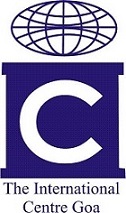
Raising the Standard of Higher Education in Goa: Challenges and Solutions
1. The National Scene
In the 70 years since independence, India has improved access to higher education (i.e. college education) as measured by Gross Enrolment Ratio (GER) which gives percentage of population in the age group 18-23 that is enrolled in college. In 1950-51 India’s GER was0.7%; in 1960-61 1.4%; in 2006-07 it stood at 11%; and, by 2012 it had crossed 20% (Wikipedia). GER was 23.3% in 2014-15. The national goal is to have GER of 30% by 2020.
In spite of such progress, particularly during the last decade, there is a nagging feeling that we lag behind several countries, including many in Asia, in terms of the quality of education offered at our academic institutions.. In 2006, the then newly-constituted National Knowledge Commission (NKC) pointed to a “quiet crisis” in higher education. A few years later, Devesh Kapur, Director, Centre for the Advanced Study of India (CASA), University of Pennsylvania, described India’s university system to be in “deep crisis.” It has often been pointed out that there is virtually no Indian university that has consistently broken into the ranks of the top 100 institutions in world university rankings. Such rankings, however, form just one aspect of the many problems faced by higher education in India.
A major problem that we faced is employability of our graduates. Only about 25 per cent of college graduates are considered employable. According to an ASSOCHAM report, with the exception of the top 20 B-schools (mostly IIMs), the majority of the 5,500 such institutions produce only 7 per cent employable MBAs, with the rest earning less than Rs. 10,000 pm. The Aspiring Minds National Employability Report found 80 per cent of engineering graduates to be unemployable. Similar problem is known to exist at post-graduate and doctoral education as well.
Other problem areas include crumbling and crumbled infrastructure; insufficient funding and disregard for research; over-regulation and poor regulation of institutions of higher learning; politicization of institutions; nepotism in faculty appointments; and, brain drain.
India’s higher education needs to step up to the challenges of the 21st century. This is especially important if we are to take advantage of the so-called “demographic dividend.” Over 40 per cent of India’s population is under 20 years. The 15-34 age group is in excess of 400 million, the largest in the world. With growing numbers of young people heading to college, we are set to become home to the largest student population in the world. If current conditions with regard to quality and employability persist and/or do not improve, India would have wasted its opportunities.
2. Higher education in Goa
Goa’s GER was 34.9% in the All India Survey of Higher Education 2010-11. This is one of the highest among GERs of Indian states. Goa’s per capita investment in higher education is the highest in the country (~Rs. 14,500). Hence, goa has access to higher education that is significantly better than the national average; and, there is good support from the government.
Goa University, rated “A” by National Assessment and Accreditation Council (NAAC) of India, and ranked 20th by the National Institutional Ranking Framework (NIRF) among Indian university, is the only university created by the state. As per NIRF ranking exercise in which 233 universities participated, of the 19 universities that have a higher rank that Goa University’s, approximately 15 are central universities which enjoy significantly higher funding that state universities. Hence, Goa University has a reasonably good standing as of today. The university has affiliated to it colleges, many of whom have established their own identity as centres of learning.
During the last few years Goa has become home to institutions that are recognizes nationally for their excellence. These include the Birla Institute of Technology and Science (BITS), National Institute of Technology (NIT) and Indian Institute of Technology (IIT); and, there is possibility that some more institutions of national importance, such as the National Institute of Design, will be in Goa soon. This makes Goa an important education hub. Experience from elsewhere, Bangalore for example, suggests that such developments auger well for Goa in the long run. The institutions of national importance would have a positive impact on Goa University which is the primary university for the bulk of Goan students.
In spite of the above, concerns regarding quality of education and employability persist in Goa too, like in other parts of the country. It is necessary to address these concerns by taking some concrete steps. What might these be? It is the answers to his question that ICG-Goa University Essay Competition 2016 looking to highlight.
3. Essay topic
This year’s is second such competition organised jointly by ICG and Goa University. The first was organized in 2014. This year’s topic – Raising the Standard of Higher Education in Goa: Challenges and Solutions – invites students from across the state to engage with the issue of the standard and overall quality of higher education and to make recommendations to address the problem. Participating students are expected to identify the key obstacles and challenges and propose workable solutions, emphasizing more on what can be done rather than what ought to be done. What concrete steps can the state government take to improve the quality of higher education? How can employability of Goa graduates be improved? What role can the private sector play? What about the main stakeholders – the students themselves or even the larger community? How could Goa stand out in the higher education scenario at the national level?
Select references
Ministry of Human Resource Development (MHRD) – http://mhrd.gov.in/
National Knowledge Commission – http://knowledgecommissionarchive.nic.in/
All India Survey on Higher Education – http://aishe.nic.in/aishe/home
National Assessment and Accreditation Council – http://www.naac.gov.in/
4. Rules for the Essay Competition
i. The Essay competition is open to students currently enrolled with Goa University, colleges affiliated to Goa University, Birla Institute of Technology & Science (Goa Campus), Goa Institute of Management, National Institute of Technology (Goa) and Indian Institute of Technology (Goa) upto the age of 25 years.
ii. The Essay should not exceed 2500 words.
iii. The Essay, along with the ‘Personal Information Form’, and copy of college/ university/ institute identity card should be sent by email to program@incentgoa.com and a printed copy should be sent to General Manager, The International Centre Goa, Dr. E Borges Road, Dona Paula, Goa 403004.
iv. The Essay should be submitted before 31st October 2016.
v. The Essay should be the original work and must not have been submitted to any other essay competition(s) or otherwise published. Participants will not be allowed to make any revisions to the essay, once it has been submitted.
vi. The participant will be required to declare any assistance received during the writing of the essay. Sources/ references used in writing the essay should be duly acknowledged in the essay.
vii. The participant will be required to submit personal information along with the essay. The personal information form, available on the website, pertains to name, address, contact details, age and college particulars of the participant.
viii. A Screening Committee constituted by The International Centre Goa (ICG) and Goa University will first review the essays received. The selected essays will be submitted to a panel of judges for final review. The panel of judges will be selected by ICG and Goa University. The decision of the screening committee and the panel of judges will be final and binding on the participant.
ix. The top three ranked essays will receive cash prizes as follows:
| First | Rs. 25,000 (Rs. twenty-five thousand) |
| Second | Rs. 20,000 (Rs. twenty thousand) |
| Third | Rs. 15,000 (Rs. fifteen thousand) |
x. The winners of the competition will be contacted at the email address mentioned in the personal information form.
xi. Prize winners will have to submit identity proof.
xii. All the essays will become the joint property of ICG & Goa University. Each participant automatically grants ICG & Goa University the right to reproduce, publish, transmit or otherwise communicate to the public their entry, in whole or in part, or using any media for any purpose without permission or payment.
xiii. Persons who have written prize-winning essays will be felicitated at a function at ICG.
xiv. Names of the persons who have written the prize winning essays will be informed to local media by press release, and will be displayed on ICG and Goa University website.
xv. Every effort will be made to publish the prize-winning essays in local media, but this should not be construed as a commitment from ICG and Goa University.
xvi. ICG and Goa University reserve the final right, where necessary, to make amendments to the above rules and to select the winners of the competition.
Also See: Ideas Unleashed 2014











